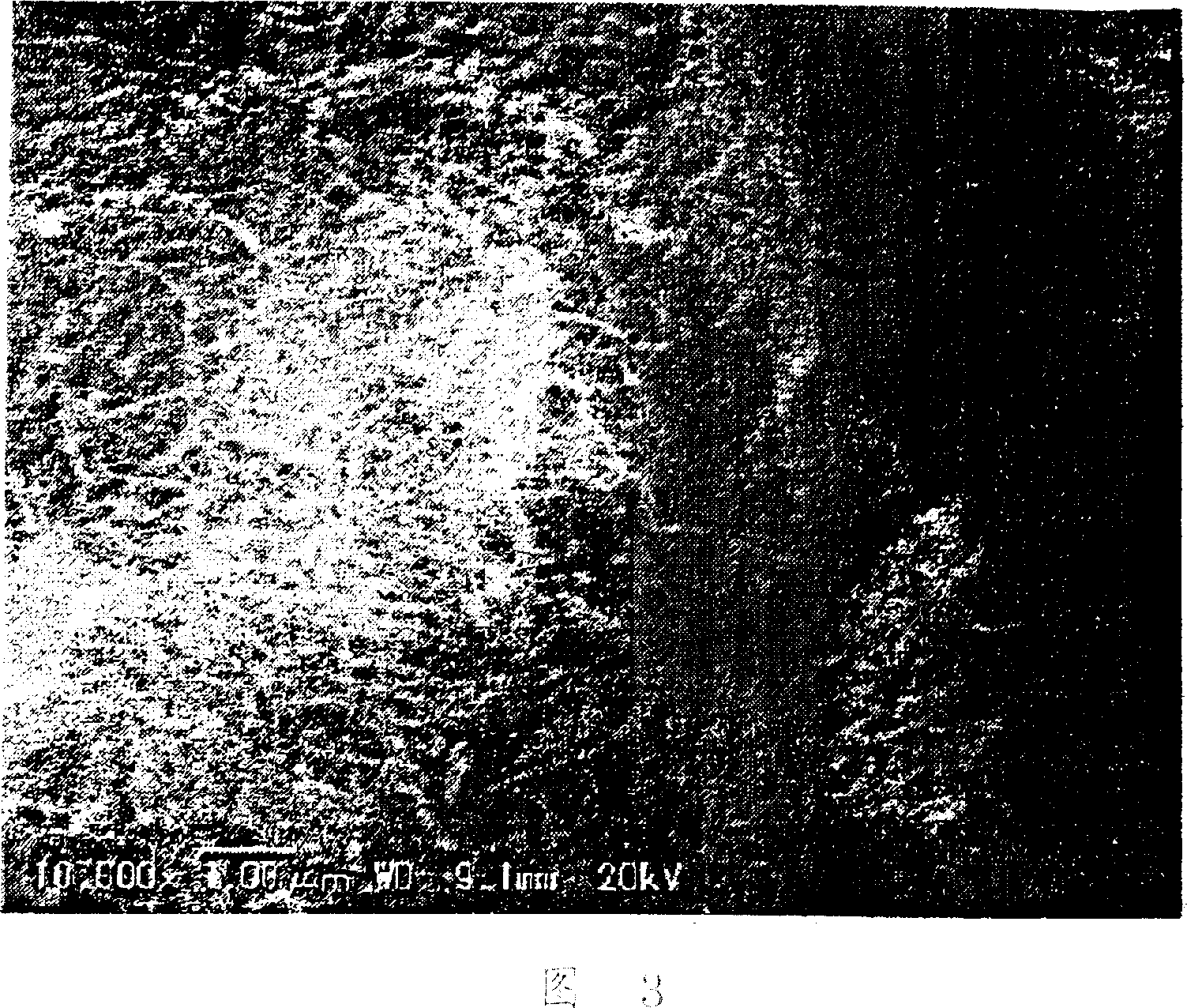Organic and inorganic composite nanofiber, organic and inorganic composite structure and methods for producing the same
An inorganic composite, nanofiber technology, applied in nanotechnology, nanotechnology, nanotechnology for materials and surface science, etc., can solve problems such as structures that are difficult to manufacture nanofibers
- Summary
- Abstract
- Description
- Claims
- Application Information
AI Technical Summary
Problems solved by technology
Method used
Image
Examples
Embodiment
[0124] Hereinafter, the present invention will be described in further detail through examples and reference examples, but the present invention is not limited thereto. Unless otherwise specified, "%" means "mass %".
[0125] [Analysis by X-ray Diffraction]
[0126] Put the separated and dried sample on the measurement sample holder, and place it in the wide-angle X-ray diffraction device "Rint-Ultma" manufactured by Rigam Co., Ltd., at Cu / Kα line, 40kV / 30mA, scanning speed 1.0° / The measurement is carried out under the conditions of the scanning range of 10° to 40°.
[0127] [Analysis by Differential Scanning Calorimetry]
[0128] The separated and dried sample was weighed by the measurement supplement, and placed in the thermal analysis device "DSC-7" produced by PerkinElmer, with a heating rate of 10 °C / min, and the measurement was performed within the temperature range of 20 °C to 90 °C.
[0129] [Shape Analysis Using Scanning Electron Microscope]
[0130] The separate...
Synthetic example 1
[0134]
[0135] 5 g of commercially available polyethyloxazoline (number average molecular weight 500,000, average degree of polymerization 5,000, manufactured by Aldrich) was dissolved in 20 mL of 5M aqueous hydrochloric acid. The solution was heated to 90° C. using an oil bath, and stirred at this temperature for 10 hours. 50 ml of acetone was added to the reaction solution to completely precipitate the polymer, and the precipitate was filtered and washed three times with methanol to obtain white polyethyleneimine powder. use 1 H-NMR (heavy water) identifies gained powder, confirms to be derived from the peak 1.2ppm of the side chain ethyl of polyethyloxazoline (CH 3 ) and 2.3ppm (CH 2 )Completely disappear. That is, it was shown that polyethyloxazoline was completely hydrolyzed and converted into polyethyleneimine.
[0136] This powder was dissolved in 5 mL of distilled water, and 50 mL of 15% ammonia water was added dropwise to the solution while stirring. After the...
Synthetic example 2
[0138]
[0139] 30 g of commercially available polyethyloxazoline (number average molecular weight 50,000, average degree of polymerization 500, manufactured by Aldrich) was dissolved in 125 mL of 5M aqueous hydrochloric acid. The solution was heated to 100° C. using an oil bath, and stirred at this temperature for 12 hours. 150 ml of acetone was added to the reaction solution to completely precipitate the polymer, and the precipitate was filtered and washed three times with acetone to obtain white polyethyleneimine hydrochloride powder. use 1 H-NMR (heavy water) identifies gained powder, confirms to be derived from the peak 1.2ppm of the side chain ethyl of polyethyloxazoline (CH 3 ) and 2.3ppm (CH 2 )Completely disappear. That is, it was shown that polyethyloxazoline was completely hydrolyzed and converted into hydrochloride of polyethyleneimine.
[0140] This powder was dissolved in 250 mL of distilled water, and 120 mL of 10% NaOH aqueous solution was added dropwise ...
PUM
| Property | Measurement | Unit |
|---|---|---|
| degree of polymerization | aaaaa | aaaaa |
| degree of polymerization | aaaaa | aaaaa |
| molecular weight distribution | aaaaa | aaaaa |
Abstract
Description
Claims
Application Information
 Login to View More
Login to View More - R&D
- Intellectual Property
- Life Sciences
- Materials
- Tech Scout
- Unparalleled Data Quality
- Higher Quality Content
- 60% Fewer Hallucinations
Browse by: Latest US Patents, China's latest patents, Technical Efficacy Thesaurus, Application Domain, Technology Topic, Popular Technical Reports.
© 2025 PatSnap. All rights reserved.Legal|Privacy policy|Modern Slavery Act Transparency Statement|Sitemap|About US| Contact US: help@patsnap.com



